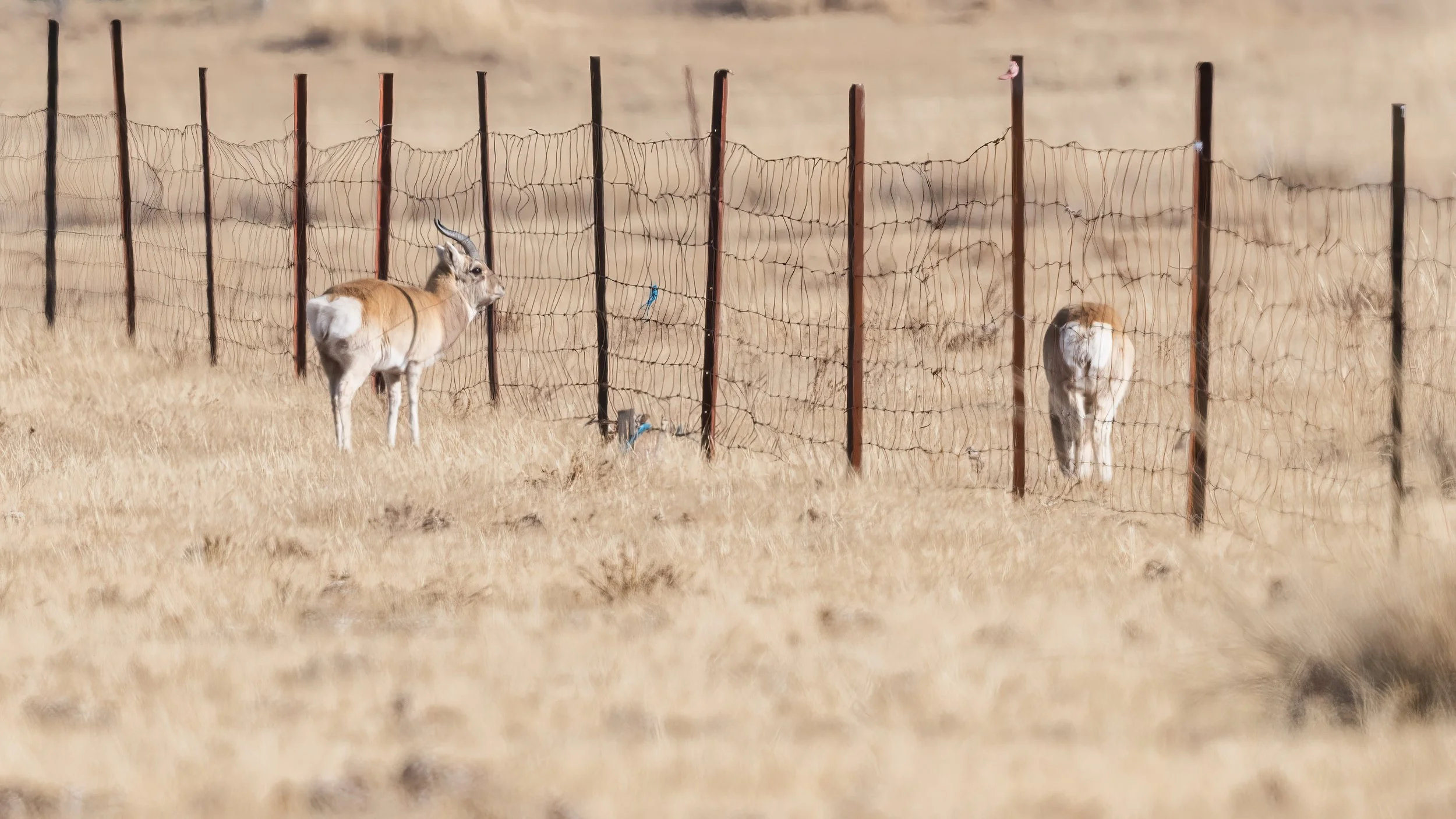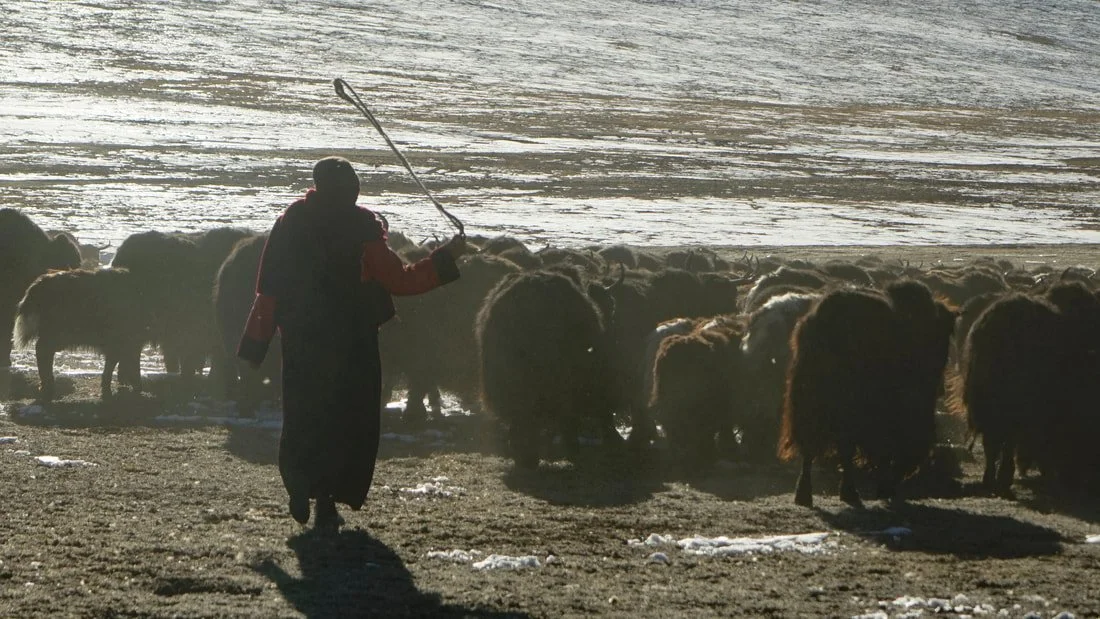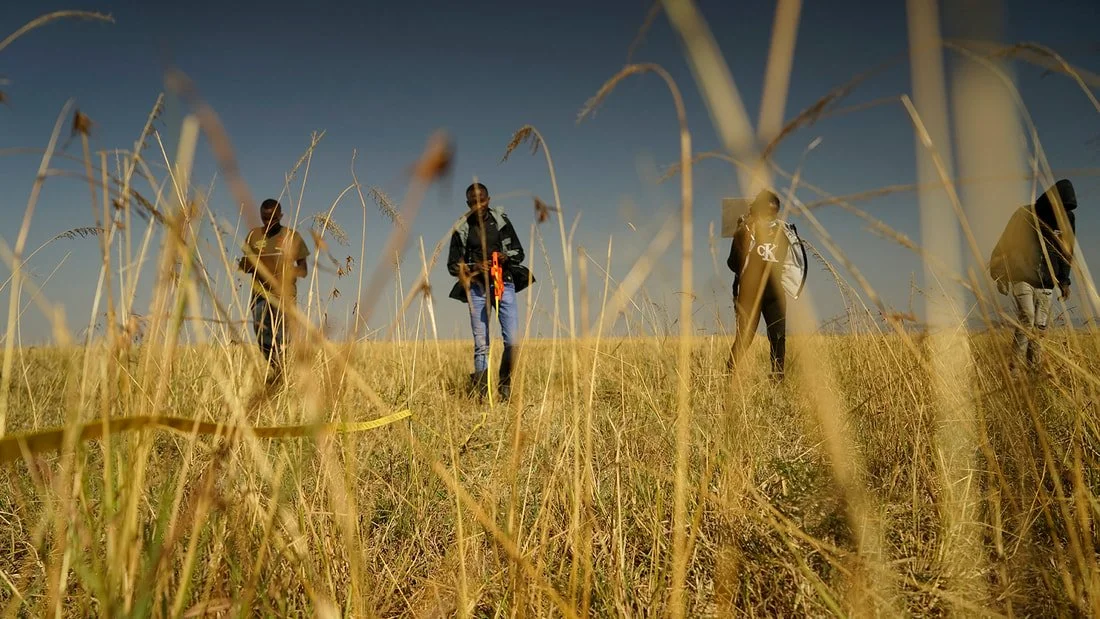Terrestrial Animal Movement in a Changing World
Photo by Zhuojin Zhang
Relevant publications
Xu, W, et al. (2023) Fencing amplifies individual differences in movement with implications on survival for two migratory ungulates. J. of Anim. Ecol.
Xu, W., et al. (2021). Barrier Behavior Analysis (BaBA) reveals extensive effects of fencing on wide-ranging animals. Journal of Appl. Ecol.
Xu, W., et al (2021). Migratory Plasticity of Ungulates in a Changing World. Ecology.
Movement is a fundamental way through which individual animals respond to and interact with their external environments. Understanding when, where, and how animals move not only enriches our knowledge of the ecology of the target species but also sheds light on the mechanisms by which various ecological processes connect across scales. Using satellite remote sensing and bio-logging technologies, our research measures the spatio-temporal responses of mobile animals to environmental change, informing actionable and timely conservation solutions.
Dynamics of
social-ecological systems
Social-ecological systems such as rangelands support both biodiversity and human livelihoods. Understanding ecological interactions (e.g. competition, herbivory, predation, and parasitism) and human-environmental relationships (e.g. stewardship, conflicts) in such system is key to addressing potential conflicts between biodiversity and sustainability. We are particularly interested in understanding how landscape fragmentation (often manifested by linear infrastructures like fences and roads) affect, and form feedback loops between, societal and ecological processes.
Relevant publications
Xu, W. and Butt, B. (2024). Rethinking the wildlife-livestock relationship at a protected area boundary. PNAS.
Xu, W. and Huntsinger, L. (2022). Minding the boundary: social-ecological contexts for fence ecology and management. Front. Ecol. Environ..
McInturff, A., Xu, W., et al. (2020). Toward a fence ecology: Frameworks and approaches for assessing the global ecological effects of fences. BioScience.
Data-enabled conservation and sustainability assessment
We have entered an era of unprecedented global commitment and investment in conservation, as marked by the United Nations Convention on Biological Diversity post-2020 biodiversity conservation framework. Our work develops data analytics and leverages diverse data types to assess biodiversity and sustainability outcomes, informing policy and management at global to local scales.
One example project under this theme is the OPEN FENCE PROJECT, a collaboration with AI scientists and conservation practitioners to map fence locations around the world.
Relevant publications
Han, Y., Xu, W., et al. (2024). Effects of freshwater protected areas on survival of a critically endangered catacean. Conss Letters.
Han, Y., Xu, W., et al. (2023). Ecological impacts of unsustainable sand mining: urgent lessons learned from a critically endangered freshwater cetacean. Proc B.
Giglioti, L., Xu, W., et al. (2022). Wildlife migrations highlight importance of working lands in the Greater Yellowtone Ecosystem. Bio. Cons.


